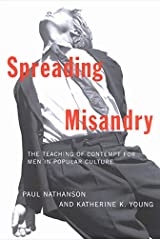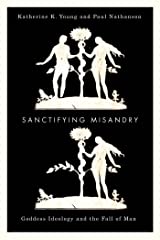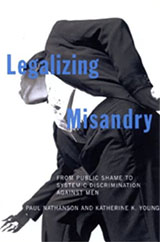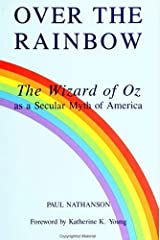Paul Nathanson ©2019
![ASTAIRE, FRED (01) [DANCING CHEEK TO CHEEK].jpg](https://menaregood.com/wp-content/uploads/2021/09/astaire-fred-01-dancing-cheek-to-cheek-jpg-scaled.jpeg)
Beginning on 5 October 2017, a long series of sex scandals shook the entertainment industry and other industries that allowed immensely powerful men access to immensely beautiful young women (or immensely beautiful young men). By now, the “casting couch” has become a dirty secret, better known as sexual harassment. But it was not always a secret, let alone a dirty one. The recent scandals reveal a change in standards of sexual behavior, one that would have surprised or even dismayed the men and women of an earlier generation—notably the hedonistic one that began during the 1960s and came to a sudden end (after a decade of dissatisfaction) this very year. My goal here is not to justify sexual harassment, which I define as coercive and intimidating sexual behavior, but to examine some non-coercive and non-intimidating forms of behavior that people now consider sexual harassment but did not always do so.
In this essay, I discuss (1) what has always gone on in front of the cameras and (2) what has always gone on behind the cameras.
During the Great Depression, Warner Brothers produced several backstage musicals, in fact, which refer by innuendo to casting couches in New York’s theater industry. By far the most famous and successful of its kind was 42nd. Street (Lloyd Bacon, 1933).
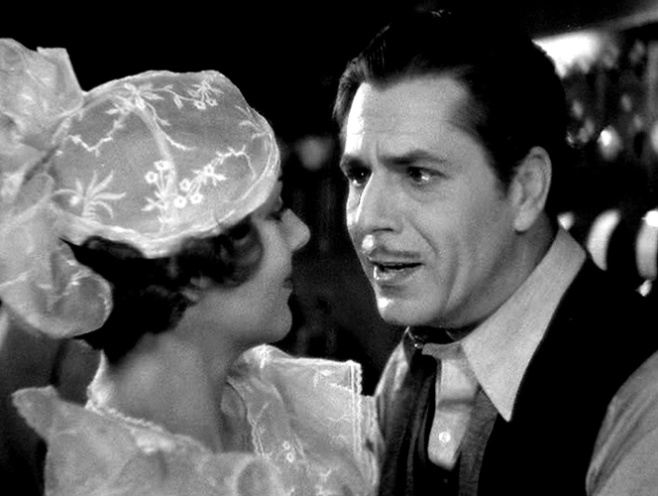
Viewers learn very quickly that the ambitious show-girls will do anything to leave the chorus line and become stars. Peggy (Ruby Keeler) is a dancer who is not merely ambitious but hungry. Illicit sex might be a fate worse than death back home, she learns from her new friends, but it is better than starving to death in the big city. And yet she refrains from a romantic involvement with Julian (Warner Baxter), the producer. This is because she has found true love with Billy (Dick Powell), the show’s young tenor. Viewers never find out if he has the same coveted opportunity as Peggy does to become a star. In the original novel by Bradford Ropes, however, Billy does indeed sleep with Julian and reaps the reward for doing so.
Hollywood movies depicted casting couches not only in the entertainment industry but also in much more respectable industries. In Baby Face (Alfred E. Green, 1933), Lily (Barbara Stanwyck) is an ambitious and self-confident woman who dreams of leaving the tough industrial town, where she runs her father’s sleazy tavern. She is not afraid to beat off any man who bothers her. One of her father’s friends, probably the only one who can actually read, tells her about the philosophy of Nietzsche. With that in mind, he advises her strongly to “use men” to get whatever she wants. Women have power over men, he adds, because men want sex. Smart women use that power, therefore, to their own advantage. Lily decides immediately to follow his cynical (but by no means unusual) advice and set out for the big city.
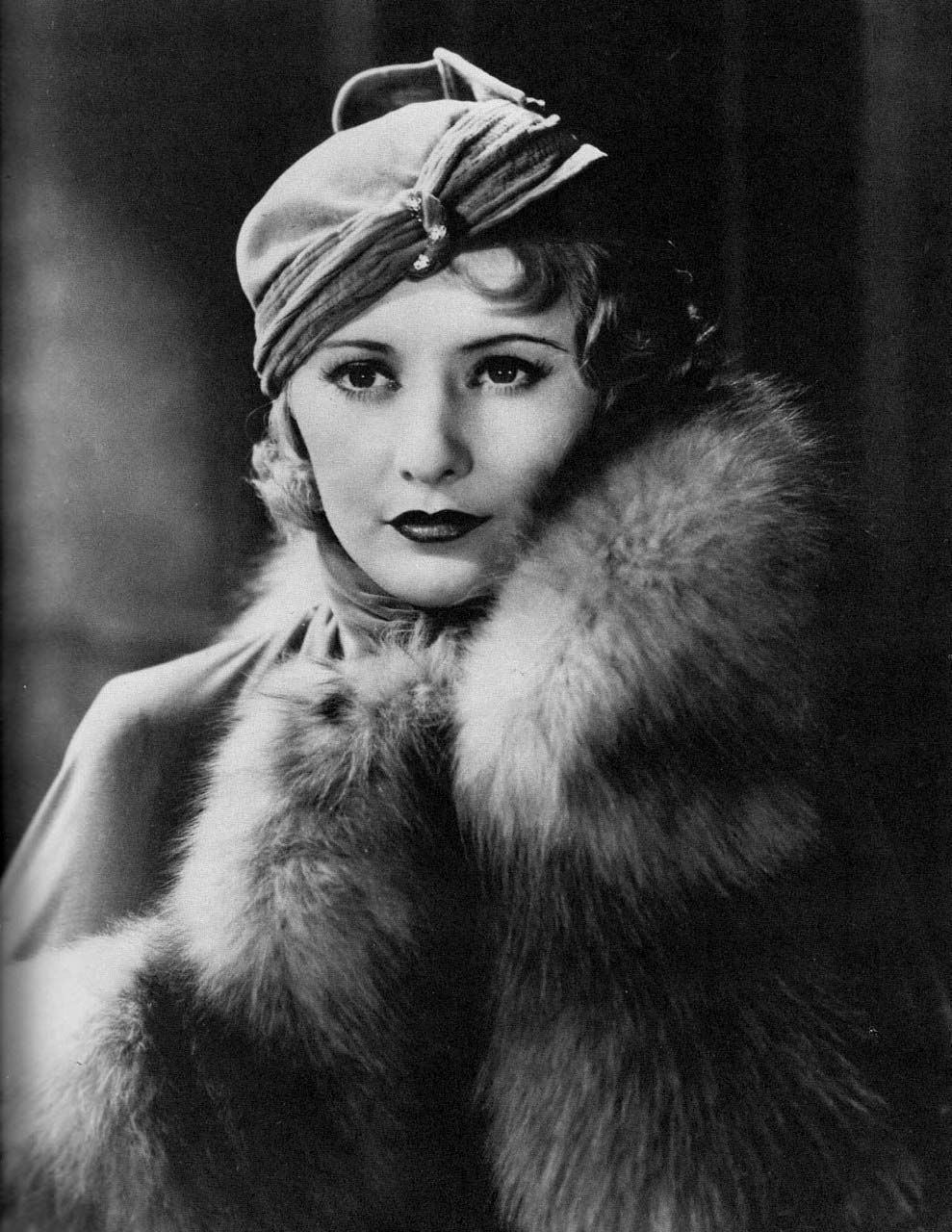
Once in New York, Lily needs a job desperately. She is intelligent, independent and ambitious. But how can she get someone to interview her for a job? It does not take her long to find out. On a busy street downtown, she passes the headquarters of a bank and immediately flirts with the doorman, who tells her exactly where to find the employment office. This is only the beginning of Lily’s rise. She flirts, sleeps and eventually marries her way to the top (leaving the lives of her male conquests in ruins).
This is not a subtle movie. No viewer could miss the message, because it is cinematically unmistakable. Lily gets a more lucrative job after every few minutes of screen time, each the result of a liaison with a higher ranking official than the last one. In each case, the camera focuses on a window that is higher above the street than the previous one. Both literally and metaphorically, therefore, Lily moves up both socially and financially from clerical offices on the ground floor to managerial ones on the top floor.
The story ends with Lily learning about true happiness. Her husband, president of the bank and grandson of its founder, is falsely charged with mismanagement. He must raise $1 million immediately and begs Lily to return all the jewels, furs and stocks that he has given her. When Lily flatly refuses to rescue him, he shoots himself. Only then does she realize the meaning of love. This ending was “politically correct” for its day, when any character in the movies—yes, male or female—had to pay for crime or cruelty. But we have no reason to doubt that many female viewers of this movie admired Lily’s intelligence, ambition and willingness to do “anything” in pursuit of her own power. A few years later, in fact, they would admire the selfish Scarlett O’Hara in Gone with the Wind, for whom “anything” included not only using marrying men under false pretenses but also using prisoners as slave laborers. But that movie and its proto-feminist heroine have become so iconic, and for precisely the same reason, that I see no reason to say more about it here.
There was a time, still within living memory, when sophisticated people—men and women alike—actually enjoyed “risqué” jokes and “double entendre.” They enjoyed cleverness and wittiness. Mae West became famous precisely for her risqué jokes, which she wrote for herself. West wrote, directed and starred in her first play, called Sex, in 1926. It did well at the box office but not with City Hall, which raided the theater. In the early 1930s, even after the Production Code introduced self-censorship at every studio, West was Hollywood’s top star at the box office (replaced by a child, Shirley Temple).
In the autographed photo (below), she added one of her characteristic quips. When Lady Lou, a rich prostitute looks hungrily at Cary Grant, a leader of the temperance movement, she says in a way that strongly suggests more than a business transaction, “Come up and see me sometime.” That is a slightly altered line from She Done Him Wrong (Lowell Sherman, 1933). On another occasion in the same movie, an elderly and perhaps naïve woman says that Lou must be “a fine woman” to have so many jewels. “One of the finest women,” replies Lou, “ever walked the streets.”
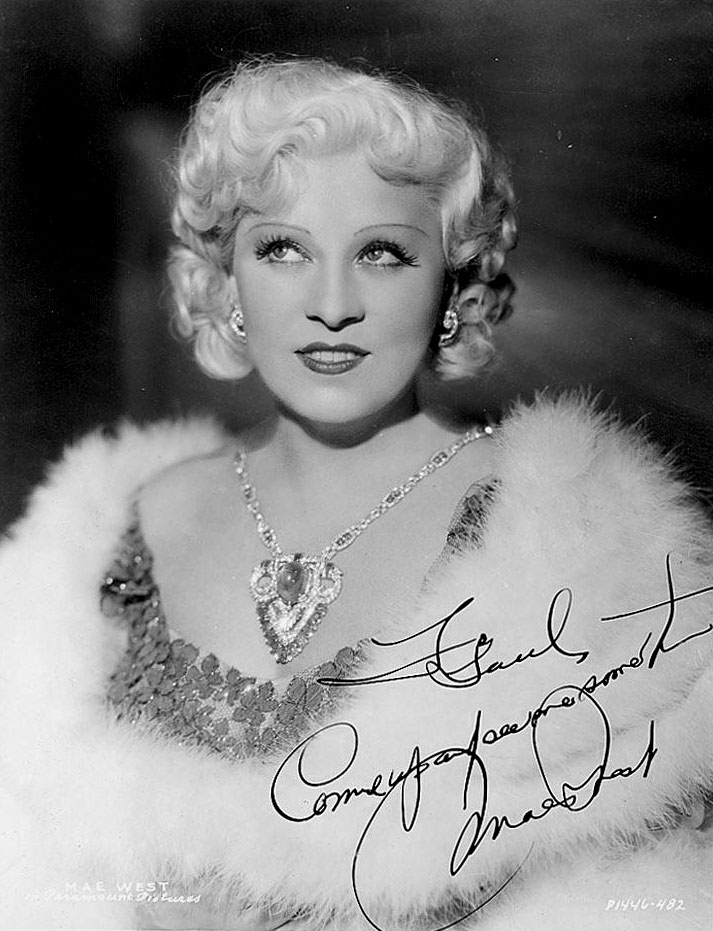
In Red Headed Woman (Jack Conway, 1932), Red (Jean Harlow) is a secretary from the “other side of the tracks.” She vows to her friend, however, that she will end up as a member of the country club. With that in mind, she sets out to seduce her boss. Bill is happily married to Irene, his childhood sweetheart. He tries, albeit feebly, to resist Red’s overt attempts at sexual manipulation. Bill and his wife part as friends, because she understands the difference between sex and love. This leaves Bill free to marry Red, but his friends and family refuse to accept her into their society. Not satisfied in a small town, anyway, she leaves Bill and heads for New York. There, she quickly meets and seduces one of Bill’s elderly friends, but Red is in love with his young and handsome French chauffeur. This attempt to reach the heights of high society fails. Albert (Charles Boyer) tells his employer about Red’s earlier affair. She accepts a payoff and sets out for a new life with Albert in Paris.
Did viewers see Red as a villain? If so, then Jean Harlow must have cried all the way to the bank. In fact, though, viewers saw her as an ambitious and “talented” woman who makes good during the Depression; some saw her as a “role model.” The happy ending includes not only the reunion of Bill and Irene, after all, but also the wealth and success of Red and Albert.
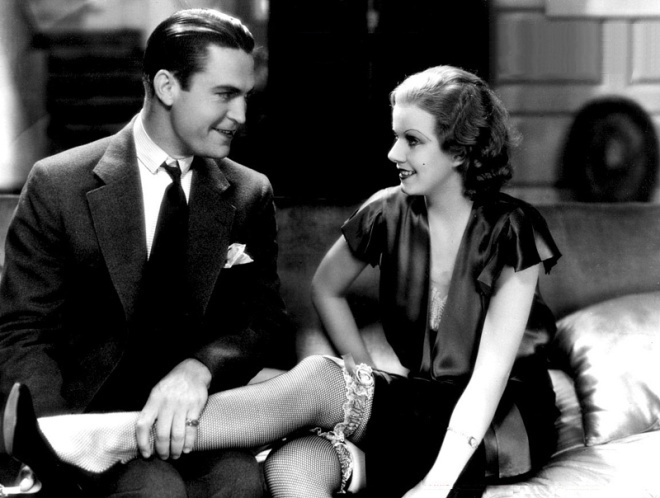
And consider the famously delicious scene in To Have and Have Not (Howard Hawks, 1944). Slim (Lauren Bacall) is approximately twenty years old. Steve (Humphrey Bogart) is at least twenty years older. But the two clearly have an erotic interest in one another. The whole script sizzles with sexual banter. The climax, as it were, of this element in the movie, comes when the cheerfully and effortlessly seductive Slim says, “You know how to whistle, don’t you, Steve? You just put your lips together and blow.” That would not qualify as sexual harassment today, because the aggressor is a woman, and a much younger one at that. Even so, her lines rely on the kind of double entendre that would now be way too risky for anyone to utter in real life. But I have never heard or read about female viewers in those days walking out of theaters or complaining that the script had “humiliated” them or any other women.
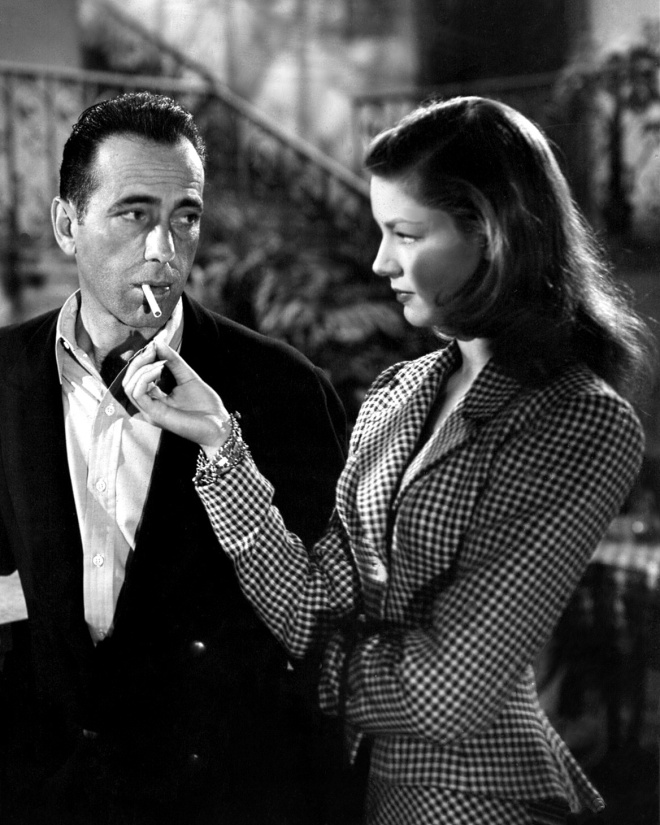
Much of that cinematic world is no more. Today, people expect a much closer match between the ideal and the real; they want art to imitate life, not for life to imitate art. But some things have obviously not changed. Business remains what it was in the 1920s. And sexuality remains what it has been since the dawn of human history.
In Swimming with Sharks (George Huang, 1985), Buddy (Kevin Spacey) is the studio boss from hell. (Ironically, Spacey himself now faces allegations of sexually harassing—that is, groping—young men, including those who were not actors and therefore not under his authority.) He brutally harasses his male employees, especially Guy (Frank Whaley), in every way except the specifically sexual one. Guy, however, turns out to be far worse than Buddy once he attains power of his own.
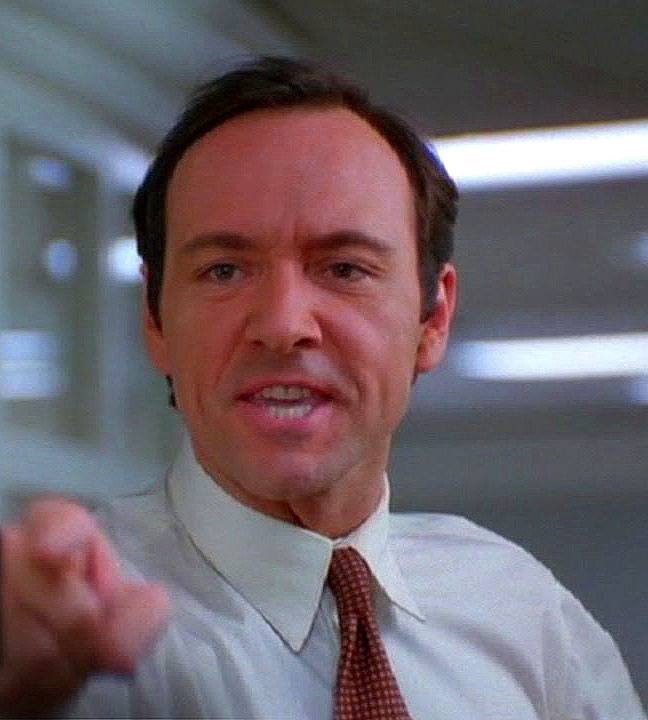
In Hollywoodland (Allen Coulter, 2006), George (Ben Affleck) is an ambitious young actor. Soon after arriving in Hollywood, he has an affair with Toni (Diane Lane), the middle-aged wife of a movie mogul. She claims that her marriage is “open,” so George becomes a “kept man.” Toni does use her influence to get jobs for George but not ones that are good enough to reward his talent.
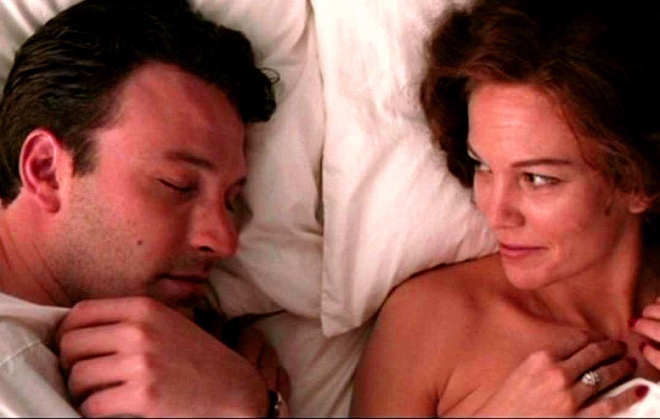
As recently as two years before women began making tearful allegations to journalists about men making lewd jokes or unwanted touches, many people—both men and women—had come to assume that women could indeed enjoy sexual adventures with men, even dangerously exotic ones, and walk away if necessary. Otherwise, how could we explain the immense popularity among women of Fifty Shades of Grey?
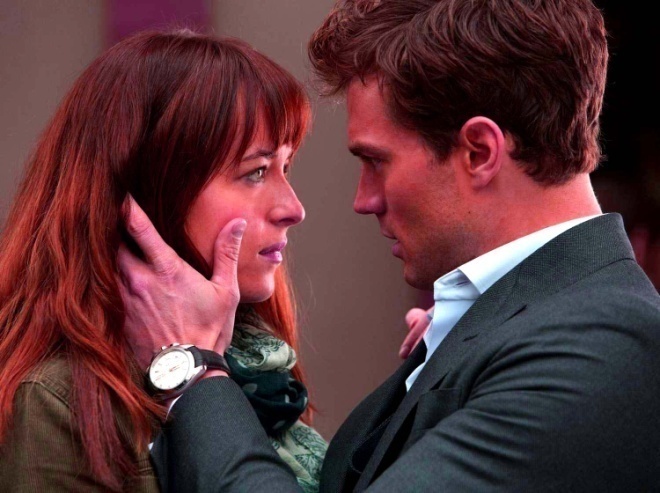
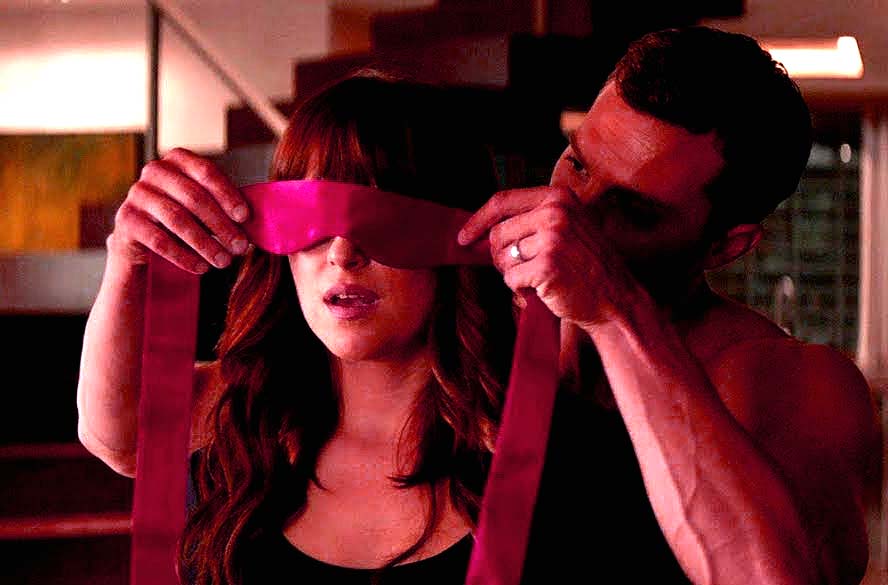
Both the original novel, by female author E.L. James (London, Vintage, 2011), and its filmed version (Sam Taylor-Johnson, 2015) have been massively popular among women. Christian (Jamie Dornan) is a fabulously wealthy young man. Anastasia (Dakota Johnson) is a naïve young student—the classic power differential of sexual harassment (above). But the story soon takes a turn away from the expected one.
Here is the author’s own description of the story: “When literature student Anastasia Steele goes to interview young entrepreneur Christian Grey, she encounters a man who is beautiful, brilliant, and intimidating. The unworldly, innocent Ana is startled to realize she wants this man and, despite his enigmatic reserve, finds she is desperate to get close to him. Unable to resist Ana’s quiet beauty, wit, and independent spirit, Grey admits he wants her, too—but on his own terms. Shocked yet thrilled by Grey’s singular erotic tastes, Ana hesitates. For all the trappings of success—his multinational businesses, his vast wealth, his loving family—Grey is a man tormented by demons and consumed by the need to control. When the couple embarks on a daring, passionately physical affair, Ana discovers Christian Grey’s secrets and explores her own dark desires. Erotic, amusing, and deeply moving, the Fifty Shades Trilogy is a tale that will obsess you, possess you, and stay with you forever” (eljamesauthor.com/books/fifty-shades-of-grey/). And if the exciting danger of this “dark” premise was not self-evident to potential viewers, the suggestive ad (and the release date of Valentine’s Day) must have cleared up any confusion.
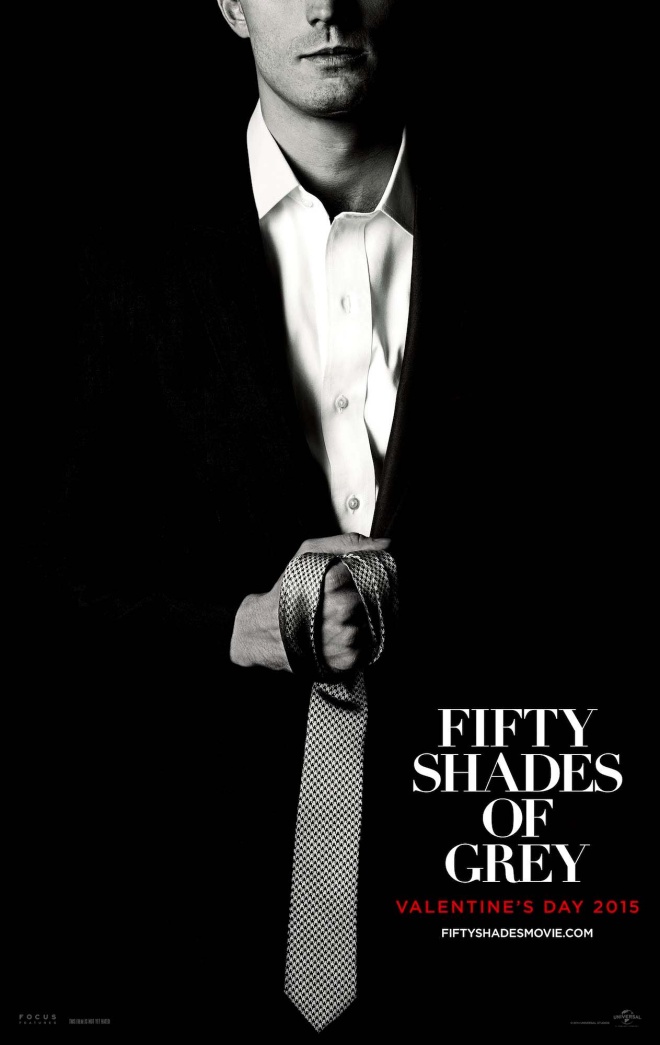
Clearly, not all women are prissy enough to fit the stereotype of our Puritan world (or of the Victorian one). Feminists would have to work very diligently indeed at any attempt to explain away all these women as hapless dupes of “the patriarchy.”
There should be no need to compile an extensive list of movies with this theme. It was among the more reliable ones of Hollywood. Whether it will continue as such is anyone’s guess.
Now, consider what has always gone on behind the cameras. Scandals of one kind or another, usually involving extra-marital affairs, divorces or “love children” but sometimes even murder, had shaken Hollywood over and over again from the very beginning. The studios always tried to hide these scandals. But the “casting couch” was an “open secret” as early as the 1920s—and therefore long before the 1960s, when hedonism, exemplified by both Hugh Hefner’s Playboy and Helen Gurley Brown’s Cosmopolitan, came to prevail in society as a whole (a topic that I will discuss more fully). It now seems hard to imagine any potentate in Hollywood who refrains from sexual relations with other members of the community. Why would anyone be surprised at the accusation that these sexual relations often amount to sexual harassment? And straight men are not the only ones to face that accusation. Although very many gay people have contributed to the movie industry, they remained in the “closet” until recently. Now, even gay men “come forward” with allegations against producers, directors, musical performers and actors. Among the more infamous accusations have been those against Michael Jackson and, more recently, Kevin Spacey; in both cases, the alleged victims were teenage boys. This development is very important for a reason that I will discuss later, a reason that has nothing to do, however, with sexual orientation. The casting couch was a feature of life not only behind the camera but also in front of the camera; many movies were actually about ambitious and beautiful or talented women who used whatever advantages they had to get ahead. And these movies did not necessarily condemn them for doing so.
It is true that what caused most public outrage against old Hollywood was due to what went on in front of the camera, but the close link between debauchery in front of the camera and debauchery behind it was obvious to everyone—and not only within the entertainment industry. Moviegoers in “Peoria” clearly knew or at least suspected what was going on, which is why they routinely denounced Hollywood (and often New York) for decadence and sinfulness, which eventually forced the entertainment industry to clean up its act (if not in the studios then at least in the movies that they produced there). Increasingly, therefore, conservative and religious leaders attacked Hollywood’s decadence. By 1933, studios found it necessary to cooperate with the National Legion of Decency, rating and censoring movies in connection with the level of debauchery that viewers would see but doing nothing about the infamous casting couch that viewers could not see. Hiding reality, of course, was something that could be left to the dream factories.
The casting couch had never been a sign of professional morality. Professionalism had never had anything to do with Hollywood (although it should have with the passage of time and the rise of unions, film schools and so on). The casting couch was not only a cynical sign of power (for those with power), however, but also an opportunistic sign of ambition (for those who wanted power). The Hollywood moguls (and many of their equivalents in other industries) were not “professionals” at all. They were not refined gentlemen. They did not learn their trade at film school or take Professional Ethics 101. To put it bluntly, they were ruthless and even brutal businessmen in an industry that rewarded physical beauty, whether female or male, more highly than anything else—even more than acting ability (although the most successful moguls understood that some acting talent and the ability to dance or carry a tune could be helpful). The actresses, too, were not professionals (except, perhaps, for a few stars from the Broadway stage or even the London stage). They did not go to film school or take Feminist Ethics 101. They were not, for the most part, refined ladies who fainted at the sight of someone’s genitals or the sound of a lewd joke (although they sometimes played characters that did). They were talented, by and large, but also tough and ambitious businesswomen. And, as I say, the same applied to young actors. All of these people, both female and male, learned very quickly what the price of a breakout part in a new movie could be and saw that price in the context of opportunity. On the whole, they paid it willingly. Some rose almost overnight from the lower ranks.
Not all perpetrators have been straight men. Neither, of course, have all their victims. “Women aren’t the exclusive victims of the casting couch” writes Adams about the 1950s and 1960s. “The notorious agent Henry Willson, the subject of Robert Hofler’s book The Man Who Invented Rock Hudson: The Pretty Boys and Dirty Deals of Henry Willson, played the same power game with generations of boys and young men seeking Hollywood recognition. Counting Hudson, Troy Donahue and Tab Hun-

ter (above) among his clients as well as Lana Turner and Natalie Wood, the predatory Willson had a reputation as a “casting couch agent,” trading liaisons for opportunity in the ‘40s, ‘50s and ‘60s” (Adams, “Casting-Couch Tactics”). Until very recently, gay victims were even more desperate to avoid “coming forward” than female victims were, because being gay or even suspected of being gay was in itself more than enough to destroy their careers.
To conclude, there is a reason for my cover illustration of Fred Astaire and Ginger Rogers. How very far we have come from their time. Today, men are afraid (with good reason) of openly admiring the beauty of women. In those days, both men and women enjoyed sex. They certainly enjoyed risqué humor. The Depression notwithstanding, viewers smiled at their balletic scenes as graceful metaphors of the process that begins with attraction (first his and then hers), continues with rejection (her rejection of his perseverance, due most often to mistaken identity) and concludes with reunion. These movies presented life as a beautiful and joyful dance between men and women as equals. (And, contrary to popular opinion, Rogers did not do everything that Astaire did only backwards and in high heels. She danced side by side with Astaire, not following his “lead.” And he alone did the choreography.) I make this minor point only to indicate that Astaire and Rogers represented a paradigm of sexual equality, not “patriarchy.” This was an ideal, of course, and not everyone attained it. Some men were cads, not gentlemen. Some women were gold-diggers, not ladies. But every society must have an ideal of personal behavior in daily life. Do we have a better one?
Paul Nathanson
© 2018

Paul Nathanson has a BA (art history), a BTh (Christian theology), an MLS (library service), an
MA (religious studies) and a PhD (comparative religion). Of particular interest to him is the
surprisingly blurry relation between religion and secularity: how religious patterns of thought
underlie seemingly secular phenomena such as classic movies (such as The Wizard of Oz) and
political ideologies (notably feminism and wokism). With Katherine Young, he has written a
series on the problem of masculine identity in this polarized environment. These volumes include
Spreading Misandry: The Teaching of Contempt for Men in Popular Culture; Legalizing Misandry: From Public Shame to Systemic Discrimination against Men; Sanctifying Misandry: Goddess Ideology and the Fall of Man; and Replacing Misandry: A Revolutionary History of the Male Body.
The fifth and sixth volumes are not yet published: Managing Misandry: Men’s Voices on the Meaning of Manhood and Transcending Misandry and Misogyny: From Feminist Ideology to Intersexual Dialogue.
